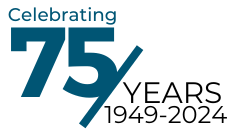A challenge that many people face is determining the ideal way to pay your bills. Money management is extremely important, but it can be challenging since there is a lot of information to keep track of, including payment amounts and due dates. If you want to stay on top of things, consider making a financial calendar that you can follow throughout the year.
What Does a Financial Calendar Entail?
So, what exactly is a financial calendar used for? Simply put, it’s a calendar that marks important dates throughout the year that involve your finances in one way or another. These important dates typically include due dates to pay bills, for tax payments, the dates you can get your free credit reports, and many others.
Besides that, people use these calendars to remind themselves of other important dates. For example, they can be used to mark when important construction projects will begin, so people can be prepared to make payments as required. Some people use these calendars to establish financial goals that should be completed in a certain period of time, such as building up an emergency fund.
Why Do We Need Them?
Why is it that so many people create personal financial calendars? The answer is simple: there are a lot of payment dates and financial goals to keep track of throughout the year, and trying to remember all of them can be quite a challenge. Even the most proficient planners have trouble managing all of their financial information when they don’t have a detailed plan to follow.
By having a financial schedule to follow, people know what has to be done each month, whether that be planning your budget for the year or updating balance sheets. That way, people will be ready to pay their taxes and make other payments on time. In certain situations, missing just one important payment can get you into trouble, so having a guide to follow is quite beneficial.
Financial schedules also serve as reminders to focus on completing your personal financial goals for the year.
Marking Your Financial Calendar
Now that you know about the importance of financial calendars, it’s time to review how to build yours. The majority of financial calendars follow a monthly plan, and showcase the different financial tasks people need to complete before each month ends. They typically start in December, as people use that month to plan their budgets for the New Year.
Going from there, lots of people mark January as a time to update their balance sheets, and use February to prepare their taxes for April. It’s also good to include mid-year and year-end financial reviews for June and November, respectively, so you can get a feel for where you stand financially. Mark any other important dates as well, including Tax Day, the start of any major renovation projects, and when you can get your free credit reports.
Following Through With Your Plan
Building a financial calendar is one thing, actually following through with it is something else entirely. If you’ve marked these dates on a physical calendar, keep the calendar close to your desk at all times so you can always refer to it. You can also do this with your smartphone calendar, which might be better since you can set up notifications and reminders about important dates.
You might want to also consider setting up automatic withdrawals and deposits based around your calendar. Set them up with important dates so you can have all your payments handled automatically.
If you can quickly reference your financial calendar at any time, you should have no problem keeping up with your yearly payments.
Having trouble keeping your important financial documents organized? The Portable P-touch Label Maker from Brother is perfect for use at home and at the office, as it allows you to quickly create labels to you can use to easily identify important folders and documents


